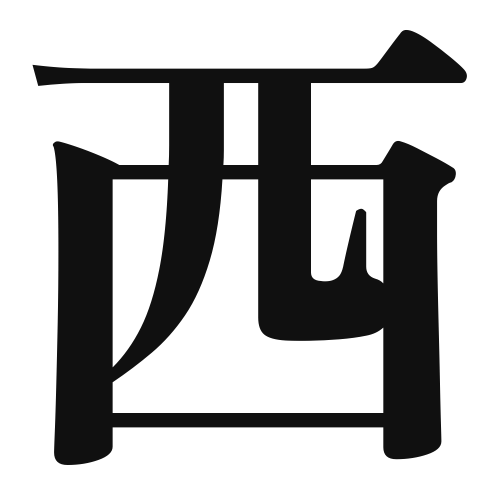1. Overview of Meaning
The kanji “西” (nishi) means “west.” It is used to indicate the direction opposite to east and is often associated with the setting sun.
2. Formation and Radical
Formation of the Kanji: The kanji “西” is a pictogram that originally represented the shape of a person with arms outstretched, symbolizing the direction of the west. It is classified as a pictographic character.
Radical: The radical for “西” is also “西,” which is used in various kanji related to direction.
3. Examples of Usage
Common Words and Phrases:
- 西洋 (seiyou) – Western countries
- 西部 (seibu) – western region
Example Sentences in Daily Conversation:
- 私の家は西にあります。 (Watashi no ie wa nishi ni arimasu.) – My house is to the west.
- 西の空に星が見えます。 (Nishi no sora ni hoshi ga miemasu.) – You can see stars in the western sky.
4. Synonyms and Antonyms
Similar Kanji:
- 東 (higashi) – east: This kanji represents the opposite direction of “西.”
- 南 (minami) – south: This kanji indicates another cardinal direction.
Antonyms:
- 東 (higashi) – east: The direct opposite of “西.”
5. Cultural and Historical Background
Relation to Japanese Culture: In Japanese culture, the direction of “west” is often associated with the setting sun, symbolizing endings and transitions.
Proverbs and Idioms:
- 西へ行くと、日が沈む。 (Nishi e iku to, hi ga shizumu.) – If you go west, the sun sets. This phrase reflects the natural phenomenon of sunset in the west.
